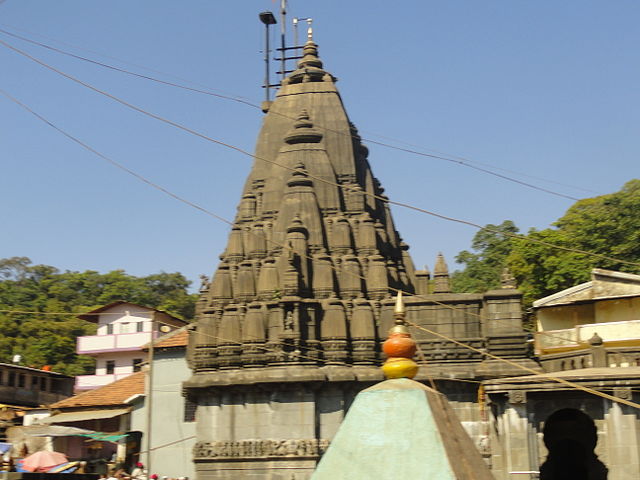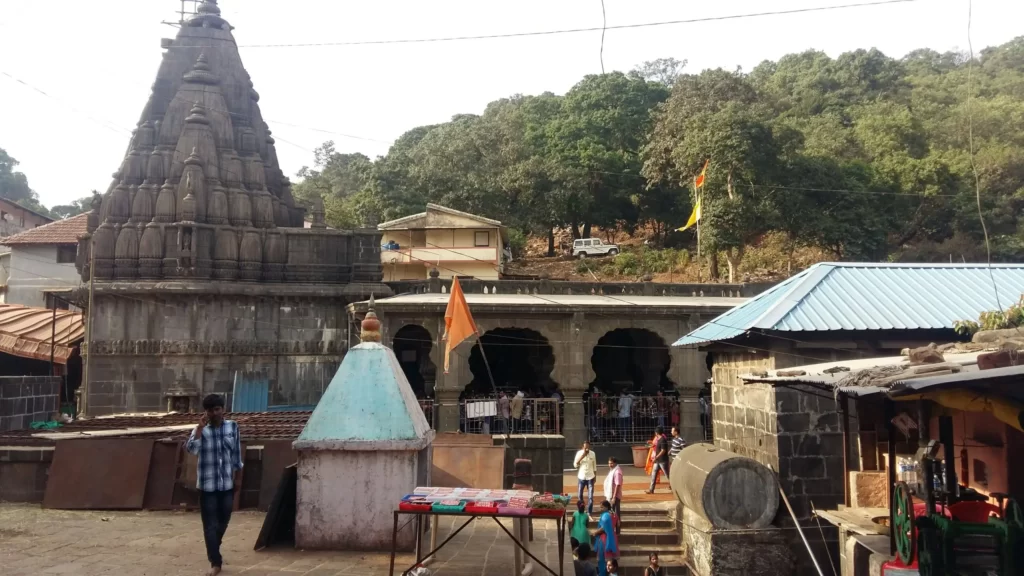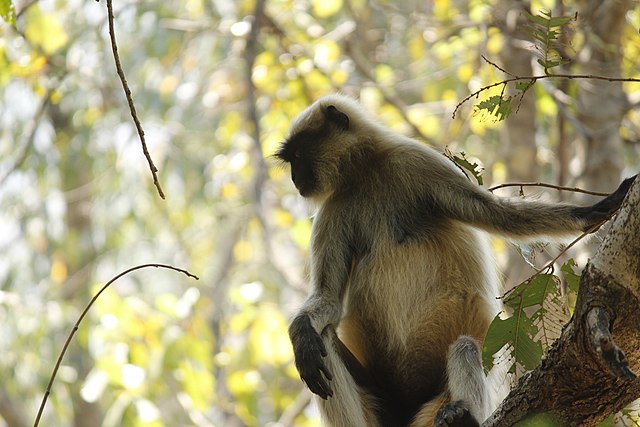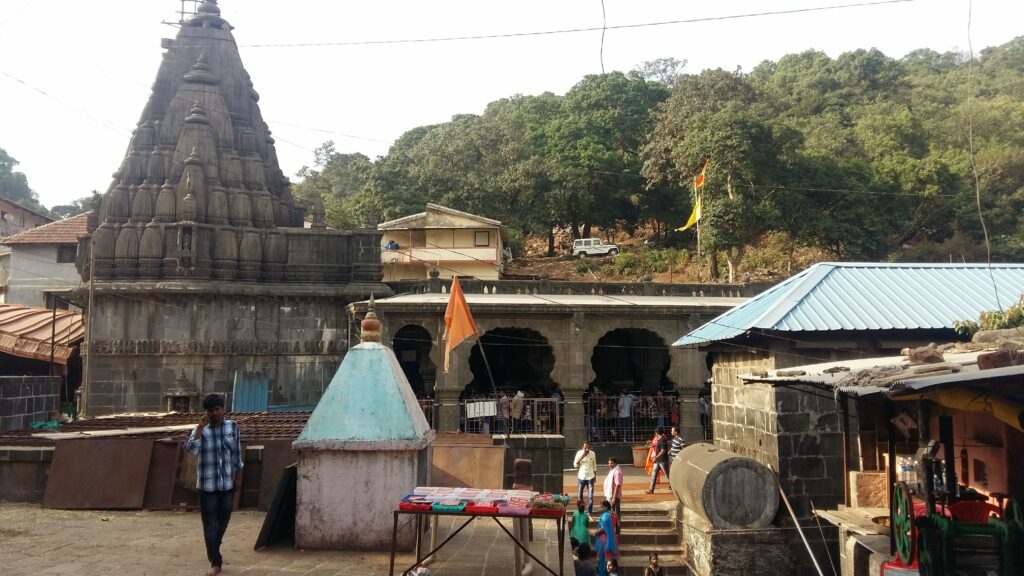Bhimashankar is a small village in the Pune district of Maharashtra, India. It is famous for being the home of one of the twelve Jyotirlingas of Lord Shiva, the supreme deity of Hinduism. The Bhimashankar temple is a sacred site that attracts millions of devotees every year, especially during the festival of Maha Shivratri. But Bhimashankar is not just a religious place. It is also a paradise for nature lovers, as it is surrounded by the lush greenery of the Bhimashankar Wildlife Sanctuary, which hosts a variety of flora and fauna, including the endangered Indian Giant Squirrel. In this article, we will explore the history, legends, architecture, spiritual significance, wildlife sanctuary, nearby attractions, and how to reach Bhimashankar.
History and Legends
Bhimashankar has a rich and ancient history that dates back to the epic times of Mahabharata. According to legend, Bhimashankar was the place where Lord Shiva fought with the demon Tripurasura, who had terrorized the three worlds with his three flying cities. Shiva used his bow Pinaka to destroy the cities and killed Tripurasura with his trident. The impact of the battle was so intense that it caused the river Bhima to evaporate. To cool down Shiva’s anger, the gods requested him to stay in Bhimashankar as a Jyotirlinga, a radiant pillar of light that represents his infinite power and presence. Bhimashankar One day Trip From Mumbai – Visit Famous temple
Another legend says that Bhimashankar was named after Bhima, the son of Kumbhakarna (the brother of Ravana) and Karkati (a demoness). Bhima was a powerful and cruel giant who wanted to conquer the world. He came to Bhimashankar and challenged Shiva to a fight. Shiva appeared as a wild boar and pierced Bhima’s chest with his tusks. As Bhima lay dying, he realized his mistake and asked for forgiveness. Shiva granted him salvation and also agreed to stay in Bhimashankar as a Jyotirlinga. Bhimashankar One Day Trip from Pune By Private Cab
The history of Bhimashankar temple is also linked to various rulers who contributed to its development and maintenance. The temple was built by Nana Phadnavis, a minister of the Peshwa dynasty, in the 18th century. He also constructed a large sabhamandap (assembly hall) and a shikhara (spire) over the sanctum sanctorum. The temple was renovated by Chimaji Appa, another minister of the Peshwa dynasty, who offered a large bell that he had captured from the Portuguese fort of Vasai. The temple was also patronized by Shivaji Maharaj, the founder of the Maratha Empire, who made endowments for its worship services.
Table of Contents
Architecture and Design

The Bhimashankar temple is a fine example of the Nagara style of architecture, which is prevalent in northern India. The temple has a simple yet elegant structure that consists of a garbhagriha (sanctum sanctorum), an antarala (vestibule), a sabhamandap (assembly hall), and a shikhara (spire). The temple is made of black stone that contrasts with the green surroundings.
The main attraction of the temple is the Shiva lingam that is installed in the garbhagriha. The lingam is believed to be swayambhu (self-manifested) and is located exactly in the center of the garbhagriha. The lingam is adorned with flowers and silver ornaments and is covered with a silver mask that depicts Shiva’s face with five heads and three eyes.
The antarala connects the garbhagriha with the sabhamandap. It has two pillars that support an arch that has carvings of various deities and human figures. The sabhamandap is a spacious hall that has six pillars and three entrances. The pillars are decorated with sculptures of gods and goddesses, such as Vishnu, Brahma, Saraswati, Lakshmi, Ganesh, Kartikeya, etc. The ceiling of the sabhamandap has paintings of floral motifs and scenes from Hindu mythology.
Spiritual Significance of Bhimashnkar

Bhimashankar is a sacred pilgrimage site for Hindus, as it is one of the 12 Jyotirlingas of Lord Shiva. It is located in the Sahyadri Mountains in Maharashtra, India, and is the source of the Bhima river. According to legend, Lord Shiva killed a demon named Tripurasura or Bhima at this place and manifested as a self-born linga. The temple was built in the 13th century by the Vishwakarma sculptors and later renovated by Nana Phadnavis in the 18th century. The temple has a Nagara style of architecture and a unique Roman-style bell with a statue of Mother Mary and Jesus.
The spiritual significance of The Temple is that it is a place where Lord Shiva displayed his power and compassion. It is also a place where devotees can seek blessings from Shiva and his consorts Parvati, Shakini and Dakini, who helped him in the battle against the demon. The temple is surrounded by a wildlife sanctuary that is rich in flora and fauna and offers a serene and natural environment for meditation and worship.
The rituals and ceremonies performed at the temple are similar to those of other Shiva temples. The main ritual is the abhishekam or bathing of the linga with water, milk, honey, curd, ghee, etc. The devotees also offer flowers, fruits, bilva leaves, coconut, etc. to the linga and chant mantras and hymns in praise of Shiva. The temple also performs daily puja, aarti and bhajans for the devotees. The temple also provides facilities for performing various rites such as mundan (shaving of head), upanayan (sacred thread ceremony), vivah (marriage), etc.
The festivals and events celebrated at Bhimashankar are mainly related to Shiva and his consort Parvati. The most important festival is Maha Shivaratri, which falls in February or March. It is believed that on this day, Lord Shiva married Parvati and also manifested as a Jyotirlinga at Bhimashankar. The devotees observe fasts, perform night-long vigil, offer prayers and abhishekam to the linga and participate in cultural programs.
Other festivals celebrated at Bhimashankar are Ganesh Chaturthi (August or September), Navratri (September or October), Kartik Purnima (November or December), Makar Sankranti (January), Mahashivaratri (February or March) and Shravan Maas (July or August). During these festivals, the temple is decorated with lights, flowers and flags and attracts thousands of pilgrims from all over India.
Bhimashankar Wildlife Sanctuary

Bhimashankar Wildlife Sanctuary is a protected area in the Western Ghats of Maharashtra, India. It was established in 1984 to conserve the habitat of the Indian Giant Squirrel, which is the state animal of Maharashtra. The sanctuary covers an area of 131 sq km and spans across three districts: Pune, Raigad and Thane. The sanctuary is named after the Bhimashankar Temple, which is one of the 12 Jyotirlingas of Lord Shiva.
The sanctuary is a biodiversity hotspot that harbors a variety of flora and fauna. The vegetation consists of deciduous, semi-evergreen and evergreen forests, as well as grasslands and scrublands. The sanctuary is home to more than 900 species of plants, including many endemic and medicinal ones. Some of the prominent trees are teak, shisam, mango, jamun, etc.
The fauna of the sanctuary includes mammals, birds, reptiles, amphibians and insects. The most famous animal is the Indian Giant Squirrel or Shekru, which is a large and colorful arboreal rodent that can grow up to 3 feet in length. The sanctuary also hosts other mammals such as leopard, barking deer, sambar, wild boar, porcupine, langur, etc. The birdlife is rich and diverse, with more than 200 species recorded. Some of the notable birds are Malabar grey hornbill, Malabar whistling thrush, Malabar parakeet, etc. The sanctuary also has many reptiles such as king cobra, python, monitor lizard, etc., and amphibians such as bullfrog, tree frog, etc.
The sanctuary offers various attractions for nature lovers and adventure seekers. There are many trekking and hiking trails that lead to scenic spots such as waterfalls, lakes and viewpoints. Some of the popular trails are Ganesh Ghat Trail (6 km), Shidi Ghat Trail (3 km), Bhorgiri Fort Trail (2 km), etc. The trails offer stunning views of the Sahyadri Mountains and the Bhima river valley. The sanctuary also has a nature interpretation center that provides information about the wildlife and ecology of the area.
Bhimashankar Wildlife Sanctuary is a must-visit destination for anyone who wants to experience the beauty and diversity of nature in Maharashtra. It is a place where one can enjoy the tranquility and spirituality of the Bhimashankar Temple as well as the thrill and adventure of the wildlife reserve.
Nearby Attractions

Bhimashankar is not only a religious destination but also a hub of adventure and nature. There are various nearby attractions that visitors can explore and enjoy. Some of them are:
- Hanuman Lake: This is a beautiful lake located 2 km from the Bhimashankar bus stand. It is surrounded by mountains and forests and is home to many animals such as squirrels and monkeys. There is also a Hanuman temple nearby, where devotees can offer prayers. The lake is a good picnic spot for families and friends and offers a serene and scenic view.
- Gupt Bhimashankar: This is a hidden treasure located 2 km from the Bhimashankar temple. It is a trail through the forest that leads to a cave where a Shivlinga is situated. It is believed that this is the original source of the Bhima river, which vanished from the temple and reappeared here. The cave is also a place of meditation and peace.
- Sakshi Vinayak: This is a temple of Lord Ganesha, also known as Sakshi Vinayak or the witness Ganesha. It is located on the way to Gupt Bhimashankar and is said to be the witness of Lord Shiva’s battle with Tripurasura. The temple has a small idol of Ganesha and attracts many devotees.
- Nagphani Point: This is the highest point in Bhimashankar and offers a panoramic view of the Sahyadri ranges and the Bhima river valley. It is also known as Cobra’s Hood Point because of its shape. It is 1.5 km from the bus stand and is a popular trekking destination for adventure lovers. The view from the peak is breathtaking and worth the climb.
- Bombay Point: This is another viewpoint located behind the Bhimashankar bus stand. It is also known as Kokan Kada or Konkan Cliff because it overlooks the Konkan region. It is a great place to watch the sunset and enjoy the cool breeze. The point also has a beautiful garden for tourists to relax.
- Vanaspati Point: This is a point located slightly higher than Kokan Kada. It offers a splendid view of the surrounding hills and valleys. It is near from the bus stand and is ideal for nature lovers and photographers.
Apart from these attractions, there are also various adventure activities available in the area, such as rappelling, rock climbing, valley crossing, etc. These activities are conducted by professional guides and instructors who ensure safety and fun for the participants. Some of the places where these activities are offered are:
- Diksal Waterfall: This is a waterfall located 8 km from Bhimashankar. It offers an opportunity to experience rappelling down a 115 feet high waterfall with the help of ropes and harnesses. The activity is thrilling and exhilarating and suitable for beginners as well as experts.
- Kondana Caves: These are ancient Buddhist caves located 15 km from Bhimashankar. They are carved out of rocks and have sculptures and inscriptions dating back to 1st century BC. They also offer a chance to try rock climbing on natural rock formations with different levels of difficulty.
- Peth Fort: This is an old fort located 20 km from Bhimashankar. It was built by Shivaji Maharaj’s grandfather in 1656 AD and was used as a watchtower. It also offers a challenging trek through steep slopes and rocky patches. The fort has a small temple of Lord Shiva at the top and offers a splendid view of the surroundings.
Bhimashankar nearby attractions are diverse and exciting and cater to different tastes and preferences of tourists. They are a perfect way to explore the natural beauty, cultural heritage and adventurous spirit of this region.
How to Reach Bhimashankar
Bhimashankar is a popular pilgrimage and tourist destination in Maharashtra. It can be reached by air, rail and road from various cities. Here is some information on how to reach Bhimashankar by different modes of transportation:
- By air: The nearest airport to Bhimashankar is the Pune Airport, which is about 125 km away. Pune Airport is well connected to major cities like Mumbai, Delhi, Bangalore, Chennai, Hyderabad, etc. by various airlines. From the airport, one can hire a taxi or take a bus to Bhimashankar. The taxi fare may vary from Rs. 2500 to Rs. 4000 depending on the type of vehicle and the season. The bus fare may range from Rs. 100 to Rs. 200 depending on the type of bus and the distance.
- By rail: The nearest railway station to Bhimashankar is the Pune Railway Station, which is about 111 km away. Pune Railway Station is linked with many cities like Mumbai, Delhi, Chennai, Lucknow, Jaipur, etc. by various trains. From the station, one can take a taxi or a bus to Bhimashankar. The taxi fare may vary from Rs. 2000 to Rs. 3500 depending on the type of vehicle and the season. The bus fare may range from Rs. 100 to Rs. 200 depending on the type of bus and the distance.
- By road: Bhimashankar is well connected by road to many cities like Pune, Mumbai, Nashik, Ahmednagar, Shirdi, etc. There are regular buses and taxis available from these cities to Bhimashankar. The buses are operated by Maharashtra State Road Transport Corporation (MSRTC) and some private travel services. The buses depart from Shivajinagar Bus Stand in Pune and other bus stands in other cities. The bus fare may range from Rs. 100 to Rs. 200 depending on the type of bus and the distance²³⁴. The taxis can be booked online or offline and the fare may vary from Rs. 10 to Rs. 15 per km depending on the type of vehicle and the season.
The various modes of transportation available in the area are buses and taxis. Buses are cheaper and convenient but may take longer time and may not be available at all times. Taxis are faster and comfortable but may be more expensive and may require advance booking.
Accommodation and Facilities:
Bhimashankar is a popular pilgrimage and tourist destination in Maharashtra. It offers various accommodation options and facilities for visitors. Some of them are:
- Accommodation options: There are several hotels, guesthouses, resorts and campsites available in Bhimashankar and its surroundings. Some of them are:
- Ratwa Resort: This is a small hotel located near the Bhimashankar temple. It offers clean rooms, spacious bathrooms, hot water, food and parking facilities. The tariff ranges from Rs. 1000 to Rs. 2000 per night depending on the season and the type of room.
- Natraj Holiday Resorts: This is a specialty resort located 2 km from the Bhimashankar temple. It offers comfortable rooms, food, garden, children’s play area and parking facilities. The tariff ranges from Rs. 1500 to Rs. 2500 per night depending on the season and the type of room.
- La Moire Resort: This is a small hotel located 4 km from the Bhimashankar temple. It offers cozy rooms, food, wifi, parking and laundry facilities. The tariff ranges from Rs. 2000 to Rs. 3000 per night depending on the season and the type of room.
- Hotel Center Point: This is a small hotel located near the bus stand in Bhimashankar. It offers basic rooms, food and parking facilities. The tariff ranges from Rs. 500 to Rs. 1000 per night depending on the season and the type of room.
- FireFly’s Resort: This is a small hotel located 5 km from the Bhimashankar temple. It offers simple rooms, food and parking facilities. The tariff ranges from Rs. 800 to Rs. 1500 per night depending on the season and the type of room.
- Sahyadri Farm: This is a camping site located 8 km from the Bhimashankar temple. It offers tents, food, wifi and parking facilities. The tariff ranges from Rs. 1000 to Rs. 2000 per night depending on the season and the number of people.
- Neelam Hills Resort: This is a resort located 15 km from the Bhimashankar temple. It offers deluxe rooms, food, pool, garden and parking facilities. The tariff ranges from Rs. 3000 to Rs. 5000 per night depending on the season and the type of room.
- Ratwa Resort Bhimashankar: This is a specialty inn located near the Bhimashankar temple. It offers decent rooms, food and parking facilities. The tariff ranges from Rs. 1000 to Rs. 2000 per night depending on the season and the type of room.
- Facilities available: There are various facilities available for visitors in Bhimashankar such as restaurants, restrooms, shops, ATMs, etc.
- Restaurants: There are many restaurants and eateries available in Bhimashankar that offer vegetarian and non-vegetarian food at reasonable prices. Some of them are:
- Hotel Shivamrut: This is a restaurant located near the bus stand in Bhimashankar that offers Maharashtrian cuisine such as misal pav, vada pav, thali, etc.
- Hotel Shree Ganesh: This is a restaurant located near the Bhimashankar temple that offers Indian cuisine such as dal fry, paneer butter masala, roti, rice, etc.
- Hotel Shree Krishna: This is a restaurant located near the bus stand in Bhimashankar that offers Chinese cuisine such as noodles, fried rice, manchurian, etc.
- Hotel Shree Ram: This is a restaurant located near the bus stand in Bhimashankar that offers South Indian cuisine such as dosa, idli, uttapam, etc.
- Restrooms: There are public restrooms available near the bus stand and the temple in Bhimashankar that are clean and well-maintained.
- Shops: There are many shops available in Bhimashankar that sell various items such as religious souvenirs, handicrafts, snacks, beverages
FAQ’s
Why is Bhimashankar famous?
Bhimashankar is famous for being one of the 12 Jyotirlingas of Lord Shiva, which are the most sacred shrines of Hinduism. It is also famous for being the source of the Bhima river and for having a wildlife sanctuary that is home to the endangered Indian Giant Squirrel.
How far is Pune to Bhimashankar?
Pune is about 111 km away from Bhimashankar by road. It takes around 3.5 hours to reach Bhimashankar from Pune by car or bus.
Which time to visit Bhimashankar?
The best time to visit Bhimashankar is during the winter season, from October to March, when the weather is pleasant and cool. The monsoon season, from June to September, is also a good time to visit Bhimashankar, as the area becomes lush green and the waterfalls are in full flow. However, one should be careful of the slippery roads and leeches during this time.
How far from Mumbai to Bhimashankar?
Mumbai is about 240 km away from Bhimashankar by road. It takes around 5.5 hours to reach Bhimashankar from Mumbai by car or bus.
Which is the nearest city to Bhimashankar Temple?
The nearest city to Bhimashankar Temple is Pune, which is about 111 km away by road.
Can we touch Bhimashankar jyotirlinga?
No, we cannot touch Bhimashankar jyotirlinga, as it is situated inside a sanctum sanctorum that is accessible only to the priests. However, we can have a darshan of the jyotirlinga from a distance and offer prayers and abhishekam to it.
Which is the nearest hill station to Bhimashankar?
The nearest hill station to Bhimashankar is Lonavala, which is about 150 km away by road. Lonavala is a popular tourist destination that offers scenic views of the Western Ghats and various attractions such as Karla Caves, Lohagad Fort, Tiger’s Leap, etc.
Conclusion:
Bhimashankar is a sacred pilgrimage site for Hindus, as it is one of the 12 Jyotirlingas of Lord Shiva. It is located in the Sahyadri Mountains in Maharashtra, India, and is the source of the Bhima river. The temple was built in the 13th century and has a unique Roman-style bell with a statue of Mother Mary and Jesus. The temple is surrounded by a wildlife sanctuary that is rich in flora and fauna and offers a serene and natural environment for meditation and worship.
Bhimashankar is also a hub of adventure and nature. There are various nearby attractions that visitors can explore and enjoy, such as Hanuman Lake, Gupt Bhimashankar, Sakshi Vinayak, Nagphani Point, Bombay Point, Vanaspati Point, etc. There are also various adventure activities available in the area, such as rappelling, rock climbing, valley crossing, etc.
Bhimashankar offers various accommodation options and facilities for visitors, such as hotels, guesthouses, resorts and campsites. There are also many restaurants and eateries that offer vegetarian and non-vegetarian food at reasonable prices. There are also public restrooms, shops, ATMs, etc. available in the area.
Bhimashankar is a must-visit destination for spiritual seekers and nature lovers alike. It is a place where one can experience the power and compassion of Lord Shiva as well as the beauty and diversity of nature. It is a place where one can find peace and bliss in the midst of the mountains and forests.


